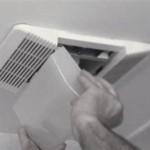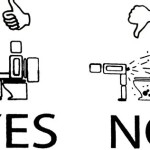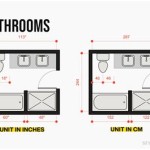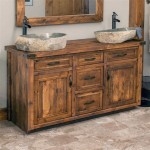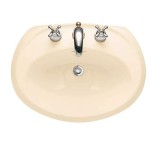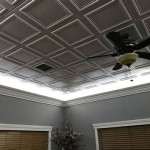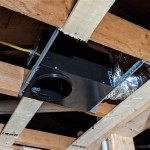Bathroom Sink Drain Trap Leakage: Causes, Diagnosis, and Solutions
A bathroom sink drain trap is a critical component of the plumbing system, designed to prevent sewer gases from entering the home and to trap debris that could otherwise clog the drainpipe. This U-shaped or P-shaped pipe (depending on orientation) located underneath the sink holds a small amount of water, creating a seal. Leakage from this trap can be a common household problem, leading to water damage, unpleasant odors, and potential plumbing complications if left unaddressed. This article explores the various reasons behind bathroom sink drain trap leakage, methods for diagnosing the source of the problem, and potential solutions for restoring the integrity of the plumbing system.
Identifying the Source of the Leak
The first step in addressing a leaking drain trap is accurately identifying the source of the leak. A careful visual inspection of the entire drain trap assembly is necessary. The following areas are the most common points of failure:
1. Loose Connections: The drain trap is typically connected to the sink drain tailpiece and the drainpipe in the wall using slip nuts and washers. Over time, these connections can loosen due to vibrations, temperature changes, or physical disturbances. Visually inspect each slip nut to ensure it is properly tightened. Evidence of water stains or mineral deposits around the connections is a strong indicator of a loose connection.
2. Deteriorated Washers: The washers within the slip nut connections are crucial for creating a watertight seal. These washers can be made of rubber, plastic, or neoprene. Over time, they can become brittle, cracked, or warped, compromising their ability to seal effectively. Carefully examine the washers for any signs of deterioration. If the washers appear damaged, they will need to be replaced.
3. Corroded or Damaged Pipes: The drain trap itself, usually made of plastic (PVC or ABS) or metal (brass or chrome), can be susceptible to corrosion or physical damage. Metal traps can corrode, especially in areas with hard water or exposure to harsh chemicals. Plastic traps can crack or break due to impact or stress. Thoroughly inspect the trap for any signs of corrosion, cracks, dents, or other damage. If any damage is found, the entire trap assembly may need to be replaced.
4. Improper Installation: A poorly installed drain trap can be a frequent cause of leaks. This may involve misaligned pipes, improperly tightened connections, or the use of incompatible materials. If the drain trap was recently installed, it is essential to review the installation to ensure it was done correctly, paying attention to proper alignment and tightness of connections.
5. Clogs in the Drain Line: A partial or complete clog downstream from the trap can cause water to back up into the trap, increasing pressure and potentially forcing water through weak points in the connections or the trap itself. While the clog itself isn't the direct cause of the leak, it exacerbates pre-existing weaknesses. Addressing the clog may alleviate the leakage in some cases. Signs of a clog include slow draining or gurgling noises in the drain.
6. Overflow Leaks: While not technically a drain trap leak, water can sometimes leak from the sink's overflow drain and appear as if it's originating from the trap. This can happen if the overflow drain is clogged or if the connection between the overflow drain and the sink is loose. Check the overflow drain for any debris or obstructions and inspect the connection for leaks.
To pinpoint the exact location of the leak, dry the area around the drain trap thoroughly with a clean cloth or paper towel. Then, slowly run water into the sink and observe where the first signs of water appear. This will help isolate the source of the leak and guide the repair process.
Repairing or Replacing the Drain Trap
Once the source of the leak has been identified, the repair process can begin. Depending on the severity and nature of the problem, the solution may involve tightening connections, replacing washers, repairing damaged pipes, or replacing the entire drain trap assembly.
1. Tightening Loose Connections: If the leak is due to a loose connection, carefully tighten the slip nuts using pliers or channel locks. Be careful not to overtighten, as this can damage the pipes or crack the nuts. A quarter or half turn beyond hand-tight should be sufficient. After tightening, run water into the sink again to check for leaks. If the leak persists, further action is required.
2. Replacing Washers: If the washers are deteriorated, they must be replaced. Turn off the water supply to the sink. Place a bucket under the drain trap to catch any remaining water. Loosen the slip nuts and carefully remove the drain trap assembly. Examine the washers and note their size and type. Purchase replacement washers of the same size and material. Reassemble the drain trap, ensuring the washers are properly seated within the connections. Tighten the slip nuts securely and test for leaks.
3. Repairing Minor Damage: Minor cracks or pinholes in plastic drain traps can sometimes be temporarily repaired using epoxy putty or plumbing repair tape. Clean and dry the area around the damage thoroughly. Apply the epoxy putty according to the manufacturer's instructions or wrap the plumbing repair tape tightly around the damaged area. Allow the repair to cure completely before running water into the sink. This is generally considered a temporary solution, and replacing the trap is the more reliable long-term fix.
4. Replacing the Entire Drain Trap: If the drain trap is severely corroded, cracked, or damaged, it should be replaced entirely. Turn off the water supply to the sink and place a bucket underneath the trap. Disconnect the drain trap from the sink drain tailpiece and the drainpipe in the wall. Measure the diameter of the pipes to ensure the replacement trap is the correct size. Purchase a new drain trap assembly made of the appropriate material (PVC, ABS, brass, or chrome). Install the new trap, ensuring all connections are properly aligned and tightened. Use new washers to ensure a watertight seal. Test for leaks after installation.
5. Addressing Clogs: If a clog is suspected of contributing to the leak, it must be cleared. A plunger can be used to dislodge minor clogs. For more stubborn clogs, a drain snake or auger can be used to break up or remove the blockage. Chemical drain cleaners should be used with caution, as they can damage pipes and pose health risks. In some cases, dismantling the drain trap may be necessary to manually remove the clog. If the clog is located deeper in the drain line beyond the reach of the drain snake, professional plumbing assistance may be required.
Preventative Measures to Avoid Future Leaks
Preventative maintenance can significantly reduce the likelihood of future drain trap leaks. The following measures can help maintain the integrity of the plumbing system:
1. Regular Inspection: Periodically inspect the drain trap for any signs of leaks, corrosion, or damage. Early detection of problems can prevent more significant issues from developing.
2. Avoid Over-Tightening Connections: When tightening slip nuts, avoid overtightening, as this can damage the pipes or washers. Hand-tightening followed by a slight turn with pliers is usually sufficient.
3. Use Quality Materials: When replacing drain trap components, use high-quality materials that are resistant to corrosion and degradation. Brass or chrome traps are generally more durable than plastic traps, but they may also be more expensive.
4. Avoid Harsh Chemicals: Avoid pouring harsh chemicals down the drain, as they can corrode pipes and damage the drain trap. Use enzyme-based drain cleaners or manual methods for clearing clogs.
5. Protect Against Freezing: In cold climates, take precautions to prevent pipes from freezing, as this can cause them to crack and leak. Insulate exposed pipes or allow a small trickle of water to run continuously during freezing temperatures.
6. Strain Hair and Debris: Install a strainer in the sink drain to prevent hair, soap scum, and other debris from entering the drainpipe and causing clogs. Regularly clean the strainer to maintain its effectiveness. This preventative measure is crucial for long-term drain health.
7. Ensure Proper Ventilation: Proper ventilation of the plumbing system is essential for preventing pressure imbalances that can contribute to leaks. Ensure that the vent pipes are not blocked or obstructed.
Knowing When to Call a Professional Plumber
While many drain trap leak repairs can be handled as do-it-yourself projects, there are situations where it is best to call a professional plumber. This includes:
1. Extensive Damage: If the drain trap is severely corroded, cracked, or damaged beyond repair, a professional plumber can assess the situation and recommend the best course of action.
2. Persistent Leaks: If the leak persists despite attempted repairs, it may indicate a more complex underlying problem that requires professional expertise.
3. Difficult Access: If the drain trap is located in a difficult-to-reach area, a plumber with specialized tools and experience can safely and efficiently perform the repair.
4. Complex Plumbing Systems: If the plumbing system is complex or antiquated, a plumber can ensure that any repairs are done correctly and in compliance with local codes.
5. Suspected Main Line Issues: If you suspect that the leak is related to a larger problem with the main sewer line, it is essential to call a plumber immediately to prevent further damage and potential health hazards.
Engaging a qualified plumber ensures the repair is conducted safely and effectively, preventing future complications and potential costly damages. A professional can also diagnose underlying issues that might contribute to the problem and provide long-term solutions to maintain a healthy plumbing system.

Bathroom Sink Drain Leaking Around Threads Premier Plumbing Inc

How To Repair A Leaking Sink Trap

Why Is My Kitchen Sink P Trap Leaking At Connection Nut

Bathroom Sink Drain Leak Not Sure How To Fix Doityourself Com Community Forums

Trap Leaking Under Bathroom Vanity Doityourself Com Community Forums

Easy Ways To Fix A Leaky Sink Trap 12 Steps With Pictures

Easy Ways To Fix A Leaky Sink Trap 12 Steps With Pictures

How To Fix A Leaking Bathroom Sink Paschal Air Plumbing Electric

Bathroom Sink Drain Leaking Around Threads Premier Plumbing Inc

Domestic Property Bathroom Sink Pvc Plastic Drain Pipe Leak Repair
Related Posts
